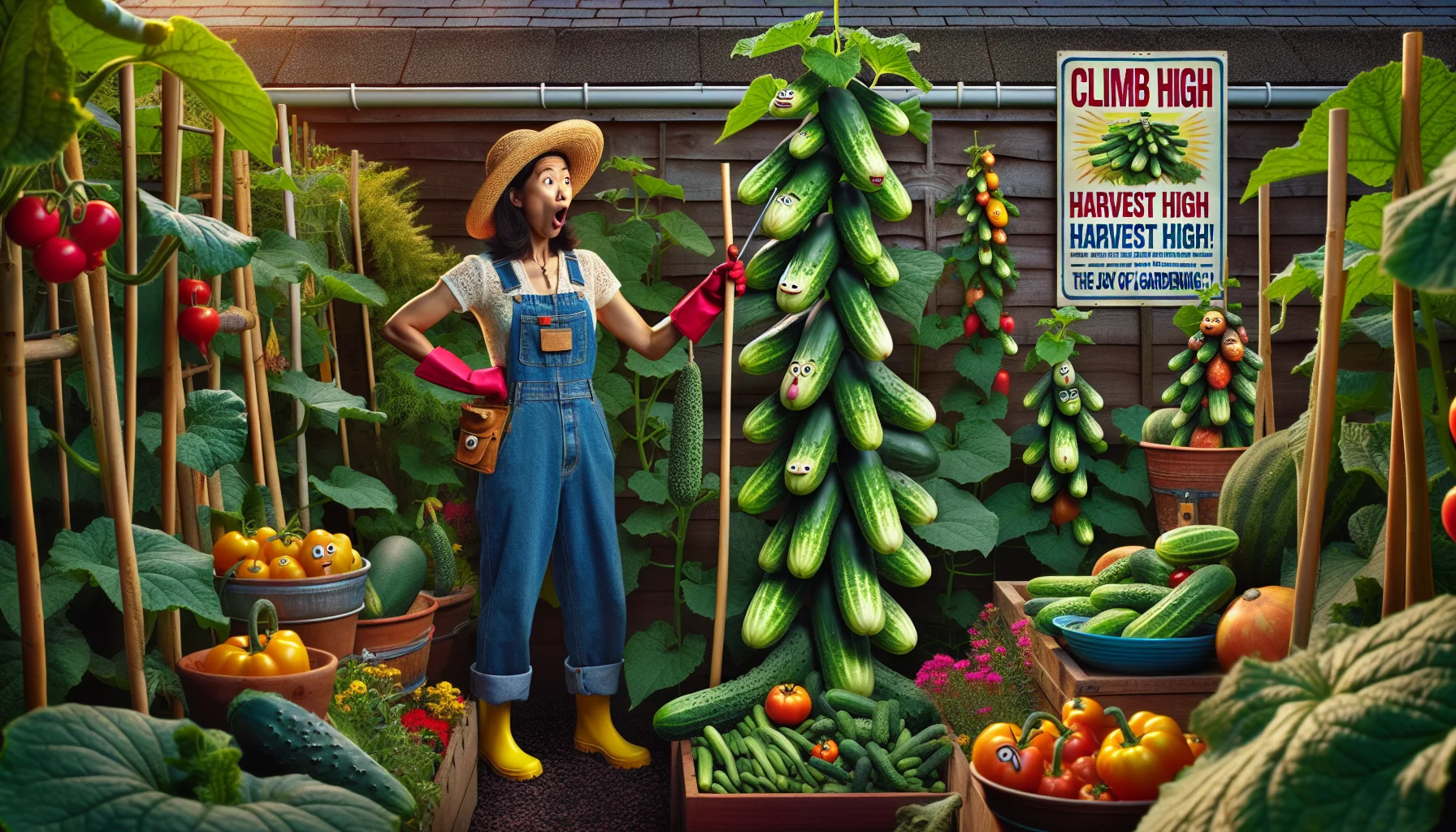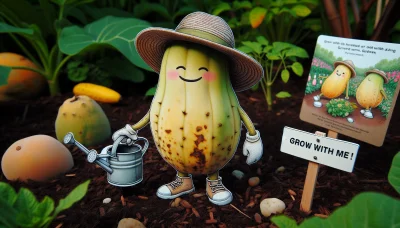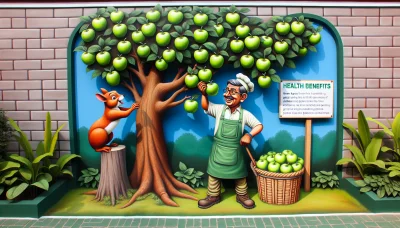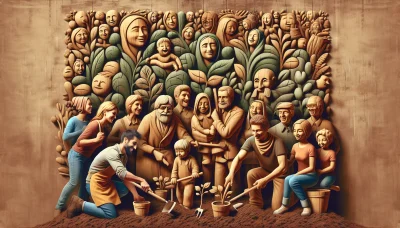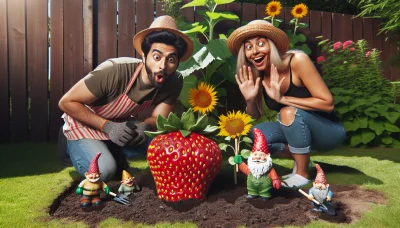Staking cucumbers Quiz
Test Your Knowledge
Question of
The Essentials of Staking Cucumbers
Staking cucumbers is a crucial practice in gardening that offers numerous benefits to both the plant and the gardener. By providing support, staking helps cucumbers grow upwards, promoting better air circulation and reducing the risk of disease. This vertical growth also facilitates easier harvesting and maximizes garden space, allowing for more plants or different varieties to be grown. Additionally, keeping cucumbers off the ground minimizes the chances of fruit rot and pest attacks, leading to healthier plants and a more bountiful harvest. Implementing staking in your cucumber garden can significantly enhance the quality and quantity of your produce.
Benefits of Staking Cucumbers
- Improved air circulation
- Easier harvesting
- Reduced disease risk
Choosing the Right Support for Your Cucumbers
When it comes to growing cucumbers, providing the right support can make a significant difference in the health and productivity of your plants. There are several support structures to consider, each with its own set of benefits. Trellises offer an ideal way to grow cucumbers vertically, saving space and promoting good air circulation around the plants. This method also makes harvesting easier and helps in keeping the fruits clean and away from soil-borne diseases. Stakes are another simple yet effective option, especially for smaller gardens. They require tying the plants up as they grow, ensuring they have the support needed to climb upwards. Cages, though more commonly used for tomatoes, can also be adapted for cucumbers. They provide sturdy support for the plants to lean on and grow through, making them a versatile choice for any garden. Each of these support methods can be tailored to fit the specific needs of your garden and your cucumber plants, leading to a healthy and abundant harvest.
Step-by-Step Guide to Staking Cucumbers
- Gather Materials: You will need sturdy stakes (at least 6 feet tall), soft ties or twine, and a hammer or mallet for driving the stakes into the ground.
- Choose the Right Time: Install stakes early in the season before the cucumber plants become too large. This helps avoid damaging the roots.
- Position the Stakes: Place stakes about 4-6 inches away from the base of your cucumber plant. If you are using a trellis system, ensure it is securely anchored in the ground.
- Drive the Stakes into the Ground: Use a hammer or mallet to drive the stakes at least 12 inches into the soil to ensure stability.
- Tie the Plants: As your cucumber plants grow, gently tie the stems to the stakes using soft ties or twine. Make sure the ties are loose enough to not cut into the plants as they grow but secure enough to support them.
- Regular Maintenance: Check your plants regularly, adding more ties as needed as the plants grow. Also, ensure the stakes remain securely in the ground.
Common Mistakes to Avoid When Staking Cucumbers
Many gardeners look forward to the lush growth and abundant harvest that cucumbers can provide. However, achieving this success often depends on proper staking practices. A common error is staking cucumbers too late in their growth cycle, which can lead to difficulty in training them up the stake and increased risk of damaging the plants. Additionally, using inappropriate or damaging ties can harm the cucumber vines. It's essential to use soft, flexible ties that won't cut into the plant tissue as they grow and expand. Avoiding these mistakes can lead to healthier plants and a more bountiful cucumber harvest.
Caring for Staked Cucumbers
Once your cucumbers are staked, proper care is essential to ensure a healthy and productive crop. Watering should be done at the base of the plants, aiming for at least one inch of water per week, either from rainfall or supplemental watering. This helps reduce leaf wetness, which can lead to fungal diseases. When it comes to pruning, remove any dead or yellowing leaves and thin out the plants to improve air circulation. This not only helps with disease prevention but also allows the plants to focus energy on producing cucumbers. Pest control is also crucial. Regularly inspect your plants for signs of pests such as cucumber beetles or aphids and take action immediately to mitigate them, using organic methods like neem oil or insecticidal soap when necessary. By following these steps, you can enjoy a bountiful harvest of cucumbers from your garden.
FAQs on Staking Cucumbers
| Question | Answer |
|---|---|
| Why should I stake cucumbers? | Staking cucumbers helps to improve air circulation, reduce disease, and make harvesting easier. It also saves space in the garden. |
| What materials can I use for staking? | You can use wooden stakes, metal trellises, or even string tied between posts. Choose a material that will support the weight of your cucumber plants as they grow. |
| How tall should the stakes be? | The stakes or trellises should be at least 6 feet tall to accommodate the growth of cucumber vines. |
| How do I train cucumbers to climb the stakes? | Gently tie the cucumber vines to the stakes with soft garden twine, or guide them through the trellis as they grow. They will also start to climb on their own using their tendrils. |
| How often should I check and adjust the ties? | Check the ties every week to ensure they are not too tight and adjust as the plant grows. This prevents damage to the stems. |
| Can all cucumber varieties be staked? | Most cucumber varieties can be staked, especially vining types. Bush varieties do not require staking since they do not grow long vines. |
